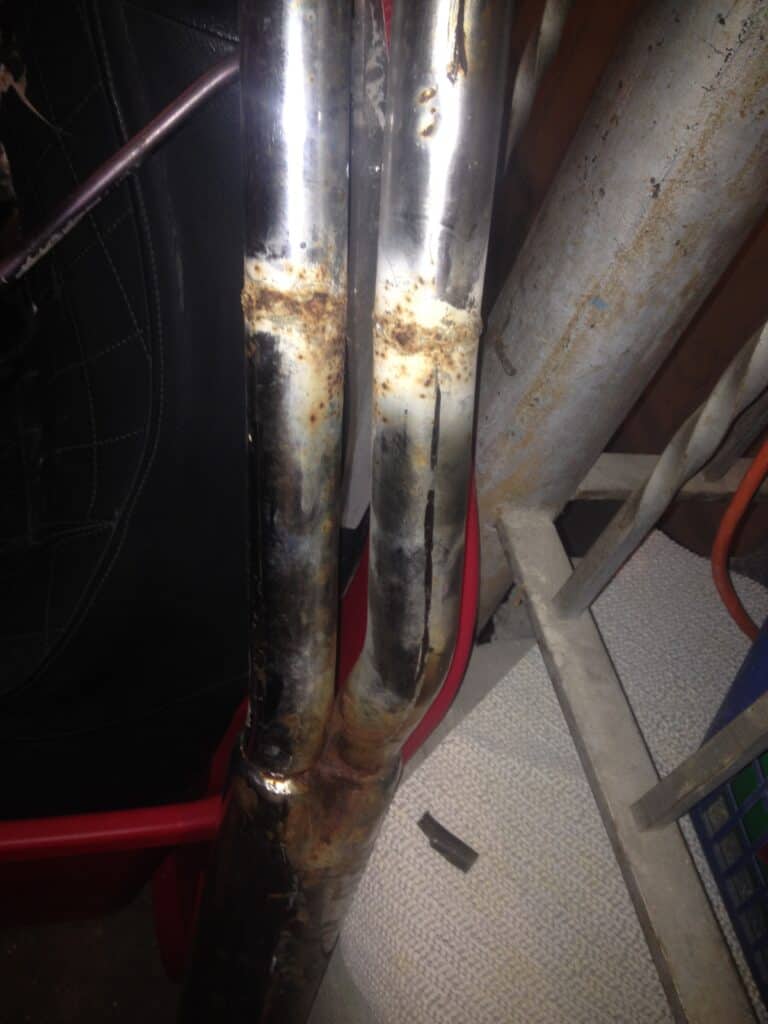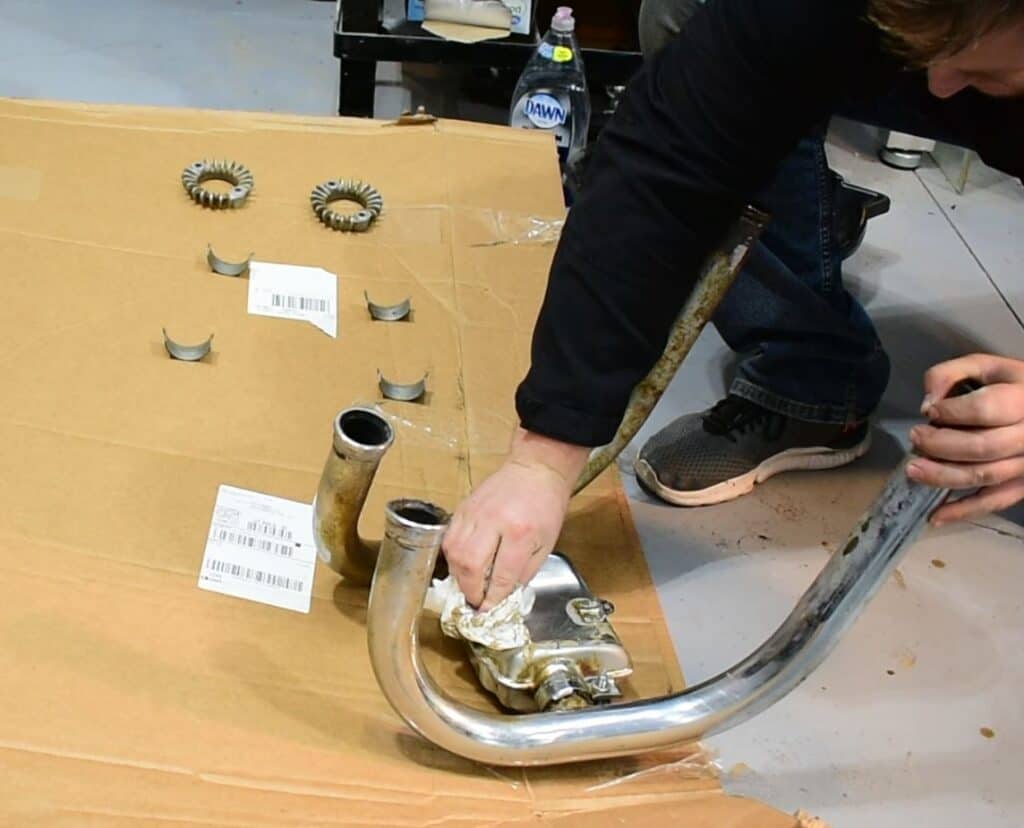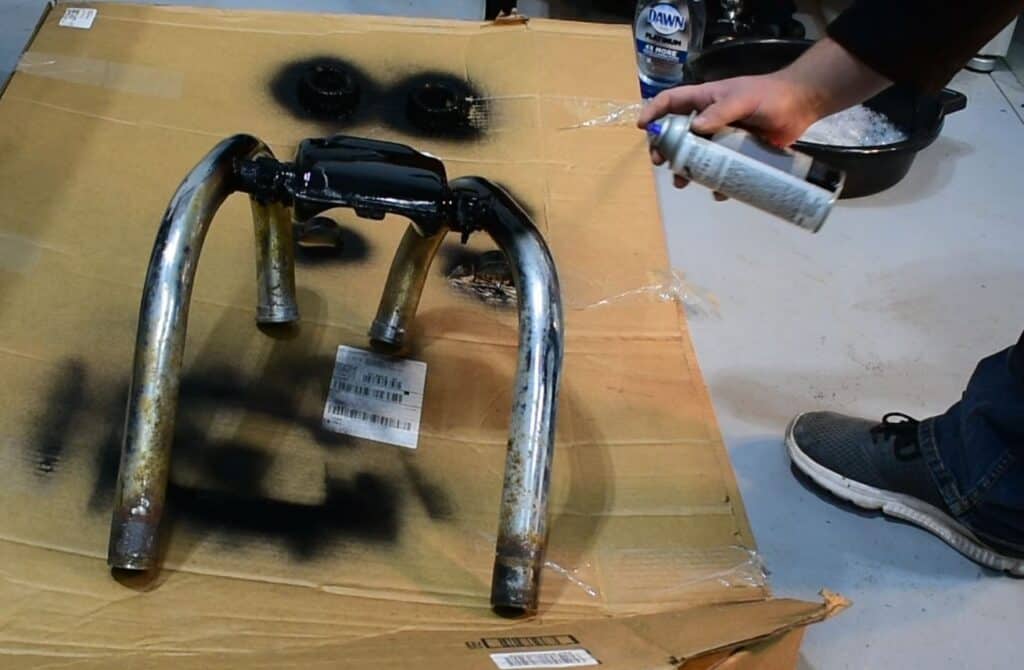
Nothing is better than riding around on a freshly cleaned motorcycle. It feels like it’s running better, it handles better, and it just generally feels nice to be on a motorcycle that’s being taken care of. As wonderful as it is to have a great clean bike, a dirty or rusted exhaust pipe can ruin the look of the whole thing, not to mention that it can also have some negative performance effects as well.
So how do you prevent rust on a motorcycle exhaust? To prevent your motorcycle exhaust from rusting, the first thing you should do is routine cleaning and washing. It’s also helpful to occasionally use a degreaser, paint or powder coat the exhaust, or replace it with pipes that are corrosion-resistant.
Your exhaust is an important part of your motorcycle. It’s what makes your bike sing, and a well-maintained shiny exhaust can be a real show stopper. Today we will look at how to prevent the exhaust from rusting, what causes the rust to form, why a rusted exhaust is bad, and finally, how to bring our exhaust back to its full glory.
How To Prevent Exhaust From Rusting
Having restored dozens of motorcycles, I’ve seen a good amount of rust on exhaust pipes and headers. In fact, this was an issue on every single one of my motorcycles I’ve restored. I’ve learned a lot from this, so I’ll share what I know when it comes to preventing that rust from forming in the first place.

Let’s start with simplest and most common way to keep your exhaust pipe rust free: keeping it clean. Because your exhaust is so close to the ground, any ride risks contaminants getting onto the exhaust and ruining the finish.
You should already be in the habit of washing your motorcycle regularly, but if you are not, you should look at making time weekly or biweekly to wash it. Usually all this requires is a quick rinse to clean anything that might have adhered to the pipe. Regular rinses are enough to keep major issues from arising.
Along with rinses, you should also look at doing regular washes with a degreaser or heavier cleaner. If you are rinsing your motorcycle weekly, then maybe just once or twice a month try using a rag to wipe down and clean the exhaust with degreaser.
Be careful when using degreaser, you should always use gloves to prevent it from getting on your hands. When washing it, make sure to focus on areas that may have been missed by the rinse. Look at the welds along the exhaust, or around areas that have clamps. It’s easy for dirt or asphalt to sit in the creases or corners of the welds, and this can cause rust over time.

Another way to prevent rust from forming on a motorcycle is to take measures to get the exhaust painted or coated. This is a much more involving process than regular washes. In order to properly paint an exhaust, the pipe must fully be removed from the motorcycle.
This is easier on some bikes compared to others, but generally speaking, removing an exhaust fully can take some time, so prepare for that. Later on I’ll talk more fully about painting a motorcycle exhaust, but just know that it’s a very effective way to prevent rust from forming, especially if you don’t have a chance to wash it regularly or it’s more exposed to the elements.
Finally, one option to prevent rust from forming is buying an after-market exhaust that’s made of higher end materials. A lot of motorcycles today use rust prone metals as exhaust pipes, but after market manufacturers will use metals that are coated or higher grade that help to prevent the formation of rust. Such materials may include stainless steel or ceramic-coated exhausts.
Keep in mind that this is probably the most expensive option, and there is no guarantee that the new pipes won’t rust, but sometimes, depending on the brand, a new and more expensive exhaust can do a lot to prevent rust from forming.We should all be working toward the rust prevention stage. Just like anything else, it’s cheaper and easier to regularly wash and maintain an exhaust then it is to have to replace it or repair it altogether.
Why Exhaust Can Rust So Quickly
Just like on cars, the exhaust is generally the closest thing on our motorcycle to the ground. This can lead to multiple problems if we don’t keep an eye on our exhaust’s condition. All exhausts are made of metal and most of which are made of some alloy steel.
There are some motorcycles and cars out there that have exhausts made out of titanium or other high grade metals, but those are rare, and very expensive. Steel, like most metals, is prone to rust. When metals are exposed to water it oxidizes. This means that at the atomic level, the oxygen atoms that are part of the water molecules is causing a reaction with the iron that is in the steel. When iron and oxygen combine, it forms Iron Oxide, which is also known as rust.
I know what you’re thinking, my exhaust pipe gets wet all the time, if it’s water that makes it rust, why doesn’t the whole thing just turn orange and fall apart? Rust doesn’t form instantaneously, it takes a little bit of time for the reaction to happen. And more frequently, the time it takes for the bike to dry isn’t long enough to create rust.
The real culprit is when the water is stuck to the exhaust for a long time. When something like mud or asphalt is stuck to the exhaust, it can cause water to be trapped between the mud and the exhaust. This can hold the water long enough to cause rust to form where the mud had been.
If you get mud or debris on your bike, you don’t need to panic and wash it off immediately, but it is something that you should address pretty quickly before it becomes a problem.
At What Point Should The Exhaust Be Replaced?
The exhaust pipe has a large impact on the performance of the motorcycle. When an exhaust pipe is cracked, it can cause not only a very loud sound, but it can make the engine feel a little underpowered, especially on newer motorcycles.
Now on newer bikes, we are seeing more technology being incorporated into the computer systems to help the bike run more efficiently. For a long time we had bikes that used carbureted fuel delivery, and I’m sure anyone who knows about carburetors also knows of their short falls. Not too long ago we saw fuel injection become the standard in bikes.
Now a days we see more advanced sensors being placed on motorcycles to help monitor fuel delivery and consumption. On bikes today there are even oxygen sensors placed on the unit to monitor the condition of the exhaust gases in order to either increase or decrease fuel trimmings.
This is a long way of saying that an exhaust is designed to be closed from the headers all the way to the muffler. Any interruption along that path can mess up and effect the engine. Generally speaking, you should replace the exhaust as soon as you notice a crack, split or hole in the pipe. There is always the option for repair, but if you are not an experienced welder then replacing the system will be an overall cheaper option.
As an experienced welder myself, I would still recommend total replacement. If there’s one hole that has formed, generally there are others in the works.
How To Freshen Up An Aging Exhaust System
Let’s say that you aren’t at the point of prevention but more at the point of repair. Maybe that’s because you haven’t maintained the exhaust, or maybe recently purchased a bike that is in need of an exhaust repair. What’s the first step in repairing the system?
First you should look at a full inspection of the unit. Is it worth repairing? Are there any cracks or dents? Or is it all just surface rust? Answering these questions is important to finding whether we need to replace or repair an exhaust.
After inspecting it and determining that it is repairable because it just has surface rust, you should look at using some type of scrub brush or bristle brush to clean off the outside surface. This is easier said than done. It may take a lot of elbow grease and pads, but usually any mount of surface rust is repairable. Using drill attachments or power tools to get at the hard to reach or deeper groves is also helpful.
If you are considering painting, you should be aware of the heat that exhaust pipes are subject to. A normal paint, or even mild temperature paint WILL NOT work on the exhaust. You need to look at using very high temperature paint in order to ensure that it will not chip or burn up. It’s always best to consult a professional when painting something as difficult as an exhaust. Maybe look up a local powder coating shop and ask around to see if they have experience working on exhausts.
Conclusion
Preventing rust on motorcycle exhaust systems is crucial for maintaining both the aesthetic appeal and functionality of the bike. By using the four strategies outlined in this article—regular cleaning and occasionally using degreasers, applying protective coatings, using heat-resistant paints, and investing in stainless steel or ceramic-coated exhausts—riders can successfully safeguard their exhaust systems against corrosion and prolong their lifespan.
Do you guys have any other suggestions on how to prevent rust on a motorcycle exhaust system? Let us know in the comments!
